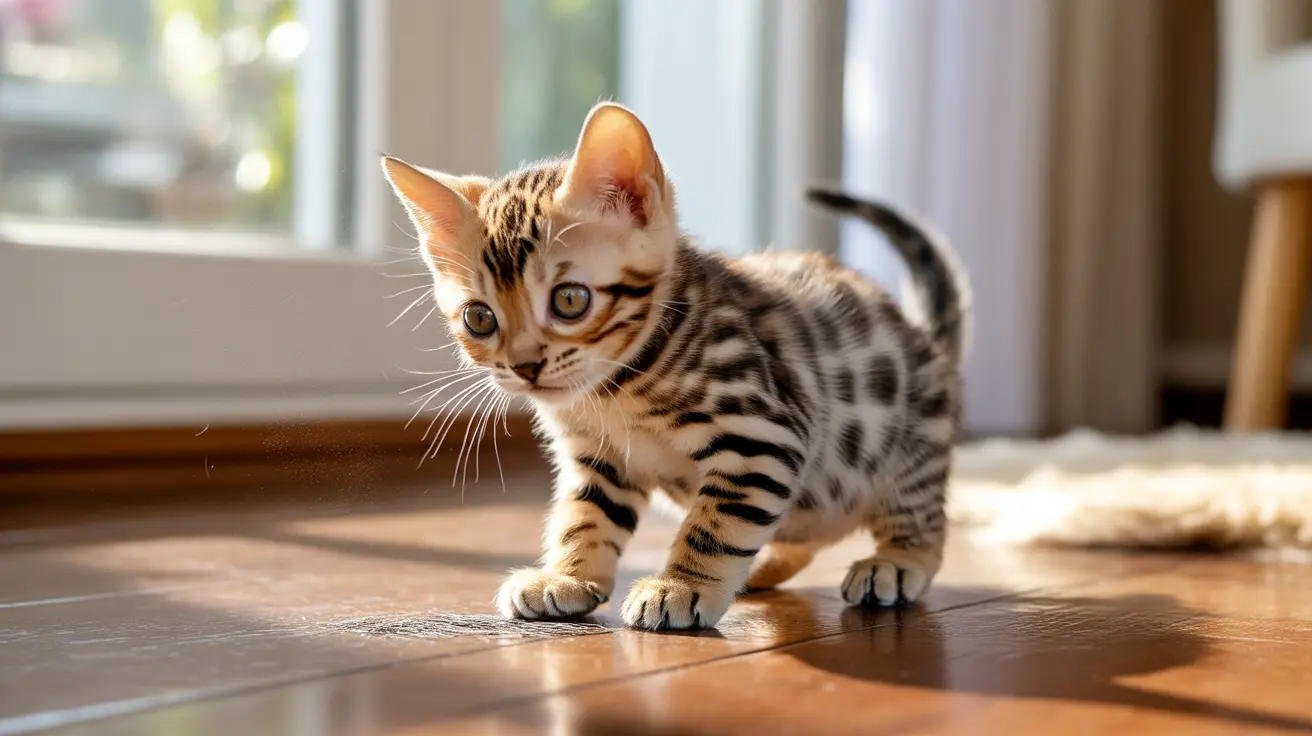Understanding when your kitten needs to poop is a crucial part of successful pet parenting and litter box training. Just like human babies, kittens give specific signals when they need to eliminate, and recognizing these cues can help prevent accidents while building positive bathroom habits.
In this comprehensive guide, we'll explore the telltale signs that indicate your kitten needs to poop, along with essential training tips and important health considerations to keep in mind.
Common Signs Your Kitten Needs to Poop
Physical Behaviors
Kittens typically display several distinct physical behaviors when they need to eliminate:
- Restless pacing or circling
- Scratching at the floor or corners
- Squatting with an arched back
- Tail held high and quivering
- Sudden stopping during play or eating
Vocalization and Body Language
Pay attention to these additional communication signals:
- Increased meowing or crying
- Frequent trips to the litter box area
- Looking back at their hindquarters
- Sudden darting behind furniture
- Intense floor sniffing
Establishing Healthy Litter Box Habits
Strategic Box Placement
Set your kitten up for success by following these placement guidelines:
- Choose quiet, low-traffic areas
- Keep boxes away from food and water bowls
- Ensure easy access for small kittens
- Provide multiple boxes on different floors
- Maintain consistent box locations
Training Tips
Successful litter training depends on consistency and positive reinforcement:
- Place kittens in the box after meals
- Reward proper litter box use
- Clean boxes promptly
- Use kitten-appropriate litter
- Never punish accidents
Understanding Normal vs. Abnormal Pooping Patterns
Healthy Patterns
Normal kitten elimination patterns vary by age:
- Newborns to 3 weeks: Need stimulation after feeding
- 3-8 weeks: Multiple times daily
- 8+ weeks: 1-2 times per day
- Formed, brown stools
- Regular timing, often after meals
Warning Signs
Watch for these potential health indicators:
- Straining to defecate
- Blood in stool
- Diarrhea lasting over 24 hours
- No bowel movement for 24-48 hours
- Crying during elimination
Frequently Asked Questions
What are the common signs that my kitten needs to poop?
The most common signs include restlessness, scratching at surfaces, circling, squatting with an arched back, and sudden changes in behavior. Your kitten may also meow more frequently or seek out private areas.
How can I help my kitten learn to use the litter box properly?
Establish a routine by placing your kitten in the litter box after meals, during wake-up times, and when showing elimination cues. Reward successful use with praise and treats, and maintain a clean, accessible litter box.
What does it mean if my kitten's poop is a strange color or consistency?
Abnormal stool colors or consistency can indicate health issues. Brown is normal, while yellow, black, or mucus-covered stools may signal infection or dietary problems. Contact your vet if you notice persistent changes.
How often should my kitten be pooping at different ages?
Very young kittens (under 8 weeks) may poop several times daily. Older kittens typically go 1-2 times per day. Consistent feeding schedules help establish regular elimination patterns.
When should I be concerned and take my kitten to the vet for pooping issues?
Seek veterinary care if you notice: no bowel movements for over 24 hours, persistent diarrhea, blood in stool, straining to defecate, or signs of pain during elimination. Also consult a vet if your kitten consistently avoids the litter box.
Conclusion
Learning to recognize when your kitten needs to poop is an essential skill for any pet parent. By staying attentive to these signs and maintaining consistent routines, you can help your kitten develop healthy elimination habits that will last a lifetime.
Remember that every kitten is unique, so be patient as you learn their individual signals and patterns. When in doubt about your kitten's bathroom habits, always consult with your veterinarian for professional guidance.






